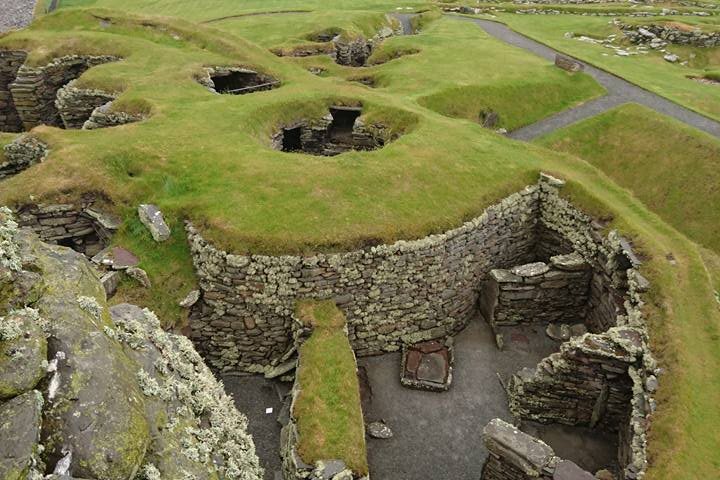Perched in the high north of Britain, the Shetland Islands have a unique heritage. Nestled between Iceland, Scandinavia and Britain, many influences have worked at shaping both land and people over the millennia.
This morning we woke to breakfast on the approach to the island of Fair Isle, nestled between mainland Shetland and the Orkney Islands. The community opened the community hall early and greeted us kindly with tea and the ever present, ever delicious scones! Local craftspeople had displays of their fine knitwear and other local crafts. The small island population rely principally on a mixture of jobs to make a living – between crofting (small scale farming), tourism, crafts and the myriad of other jobs required to keep any community functioning. Birdwatching is a significant source of tourism and this island is the most famous place in Britain for the recording of rare vagrant birds. A bird observatory houses visiting birdwatchers and is manned through the year by a full time warden. With his staff he manages the visitors as well as the bird recording, bird ringing and scientific surveys which take place here. Puffins were much in evidence, landing beside us with beakfuls of fish.
We sailed from Fair Isle to the small island of Mousa for the afternoon excursion. This has the most well preserved Iron Age (c.100BC) broch in the region. Brochs are double walled strongholds whose purpose may have been defensive or as a dwelling house of status. In all likelihood it was a mixture of both, and it was exceptional to be able to walk the narrow stone stairway between the immaculately preserved walls, to the top. The musty sweet smell of European storm petrels emanating from within the walls told of breeding birds hiding away inside. Outside, a wildlife walk along the island trails revealed an abundance of breeding birds, many of which have old Norse names reminding us always of the dual cultural influences on these island - red-throated diver, arctic tern (“tirrick”), great skua (“Bonxie”), black guillemot (“Tystie”) fulmar (“tammy nory”) with snipe, skylark, oystercatcher and arctic skua also present.
The evening finished in another community hall near Lerwick where local dancers taught us all the local moves!





